Superwash vs Non Superwash Wool: Conventional Acid Dyes on STRATUS and SNOWDRIFT
Recently on the blog, we looked at how MARSHMALLOW DK and SPARK take dye. Using the same process to dye each skein revealed the subtle and obvious differences between superwash and nonsuperwash wool. If you missed this blog post the first time around, feel free to check it out at this link! As a hand dyer, this reference is super helpful to have when deciding between the different yarns we offer here at KNOMAD.
We found examining the differences between our SPARK organic merino wool and MARSHMALLOW DK superwash merino wool so intriguing that we decided to explore the difference between two other yarns in our lineup!
STRATUS is luxuriously soft fine merino, nonsuperwash with a touch of nylon for strength. Perfect for next-to-skin wear, this yarn makes lovely sweaters, scarves, and accessories.
SNOWDRIFT is a faithful option for a standard sock yarn. As sturdy as it is soft, you can even use SNOWDRIFT to make a machine washable sweater. Superwash wool makes this yarn a piece of cake to care for. Superwash wool also shows off your dyeing skills, making well-defined, crisp speckles with ease.
This time, we will use a slightly different process, dyeing both skeins of yarn in the same pan at the same time. This will serve to further emphasize the differences between the two yarns and types of wool.
MATERIALS
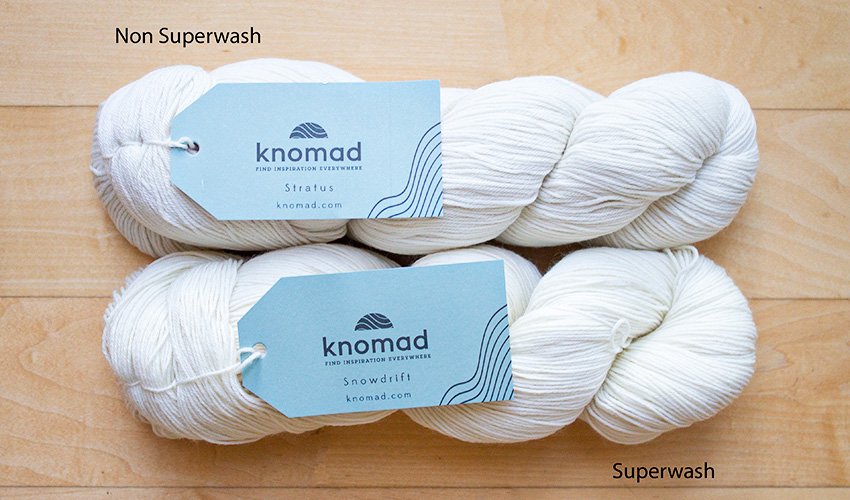
– 1 skein of KNOMAD STRATUS– 80% extrafine merino wool, 20% nylon (non superwash)
– 1 skein of KNOMAD SNOWDRIFT – 75% superwash merino wool, 25% nylon
– Dharma Trading co dye for silk and wool. This color is DARK NAVY
– Gram scale
– One cup to mix the dye in
– Citric acid powder
– Metal chafing pan at least 3 inches deep, or a metal pot you don’t use for food
– A measuring spoon. Any size will work.
– Your regular set up for heat setting yarn
– Optional: two zip ties
SOAK THE YARN
Loop a zip tie around each skein of yarn, if you are using them. In this instance, we used two different color zip ties to differentiate the two types of yarn.
Soak the yarn in lukewarm water with a dash of citric acid for about 1 hour.
MIX AND MEASURE THE DYE
Make sure to always protect yourself with gloves and a respirator whenever you work with dye in its powder form. A dust mask is not enough protection to safely work with dye powder! You should keep your own set of tools for dyeing. These tools should never be used to prepare or serve food.
Use the gram scale to weigh out the dye and citric acid in a cup.
We used 3 grams of dye and 1 gram of citric acid powder for each skein of yarn, 6 grams of dye, and 2 grams of citric acid powder in total. Add hot water to the cup and use the spoon to mix the whole thing together.
DYE THE YARN
Fill your pan with about 2 inches of water. Add the cup of dye mix to the pan and stir.
Remove the skeins from the soaking liquid, gently squeezing the excess liquid out of the yarn. Place the skeins in the pan at the same time, using your gloved hands to spread out and fully submerge the skeins.
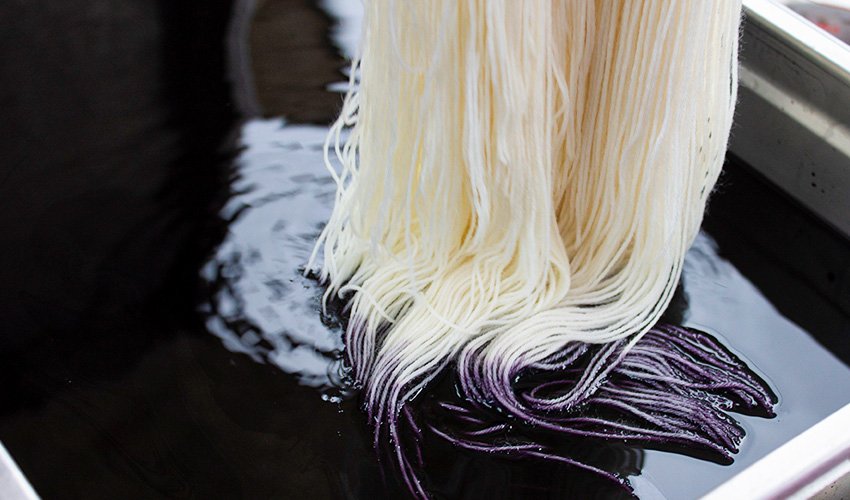 Cover the pan and heat the yarn for 15 minutes.
Cover the pan and heat the yarn for 15 minutes.
RINSE AND DRY
Allow the yarn to cool completely.
Rinse and dry the yarn as you normally would. Now, let’s compare the two skeins of yarn.
For more on the differences between superwash and non-superwash yarn, make sure to revisit our post from a couple of weeks back! Here is the link again.
We can see that SNOWDRIFT absorbed much more of the dark navy blue yarn than the STRATUS did. The superwash wool is much darker than the non-superwash wool, and also slightly redder. The non-superwash wool is lighter and firmly in the cool blue family.
What other differences do you notice between the two yarns? Let us know in the comments!
Enjoy your finished yarn! Make sure to tag us using #Knomadyarn so we can see all your fabulous projects.
Tags: Beginners, Hand dyers, snowdrift, stratus
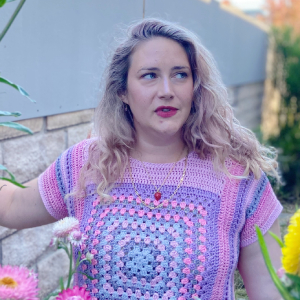
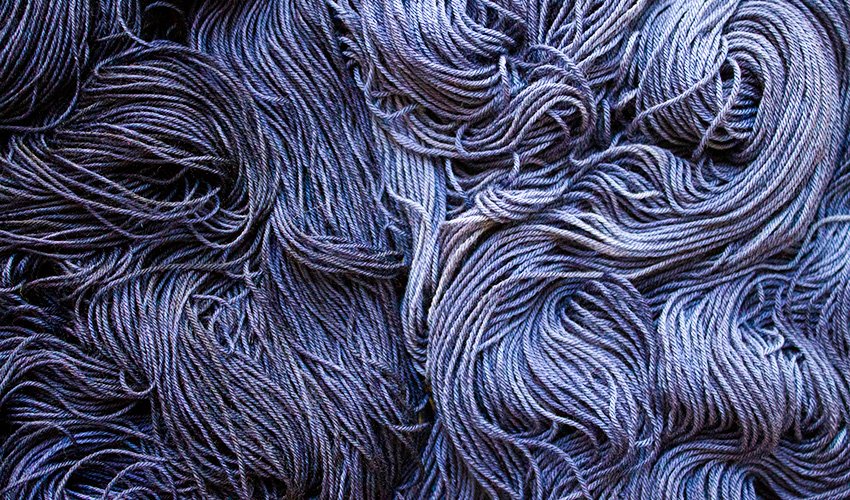
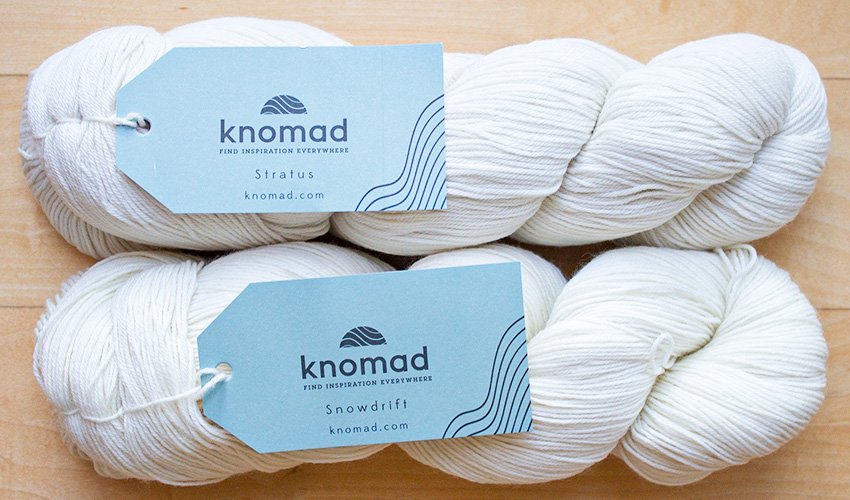
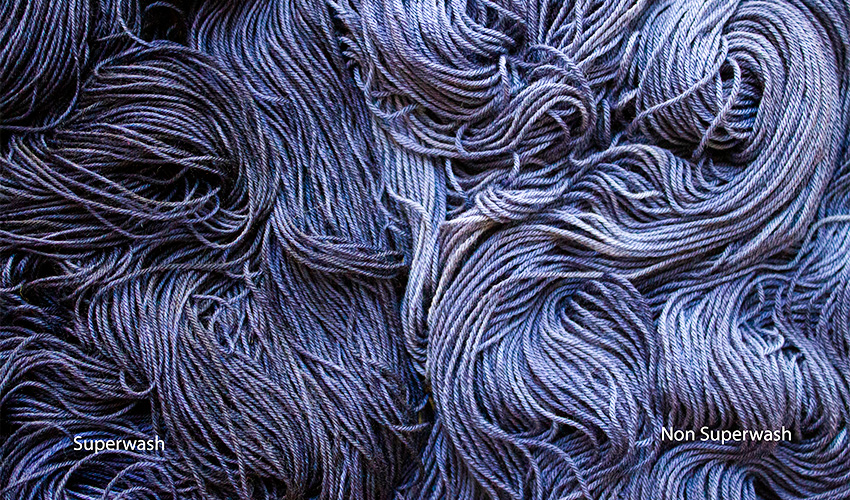
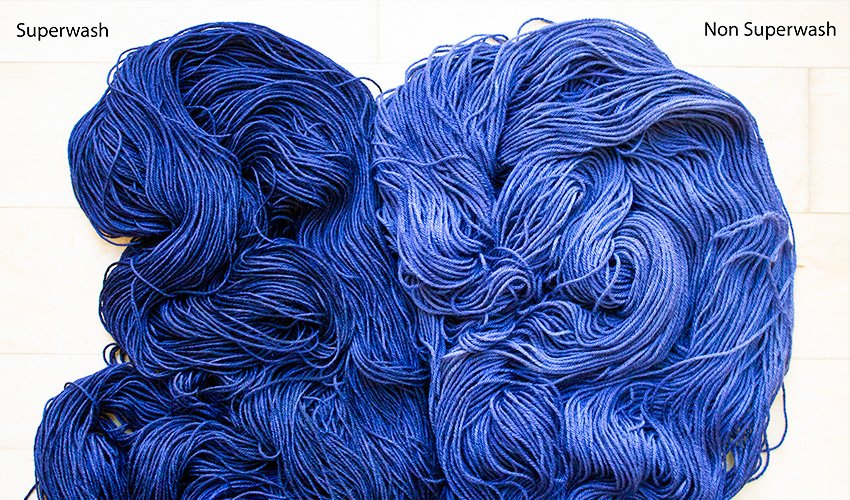






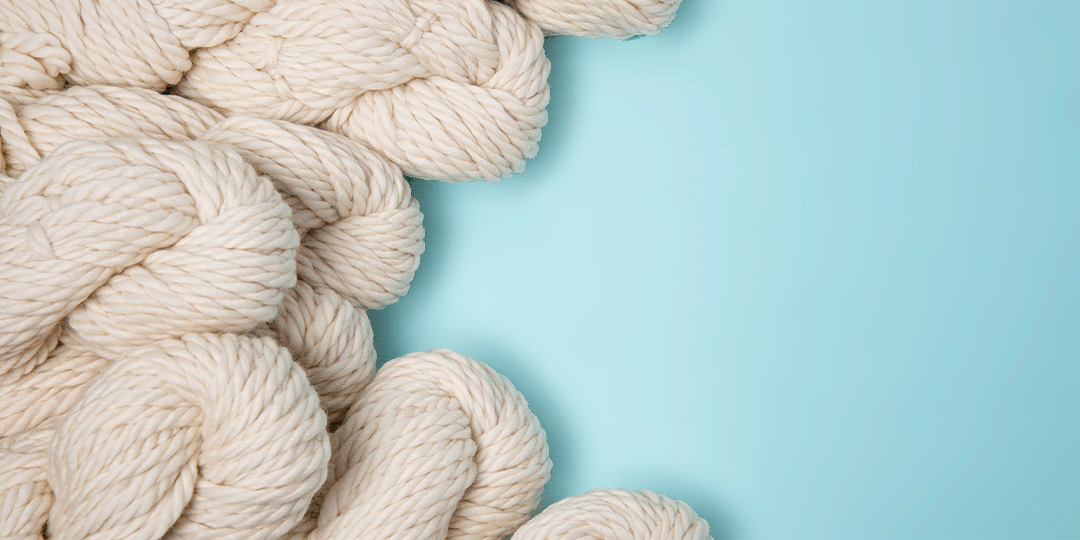

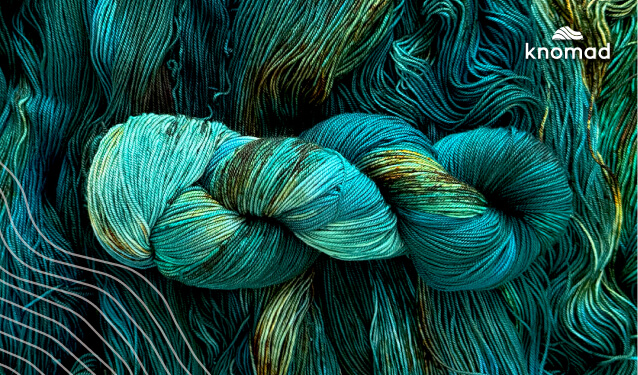
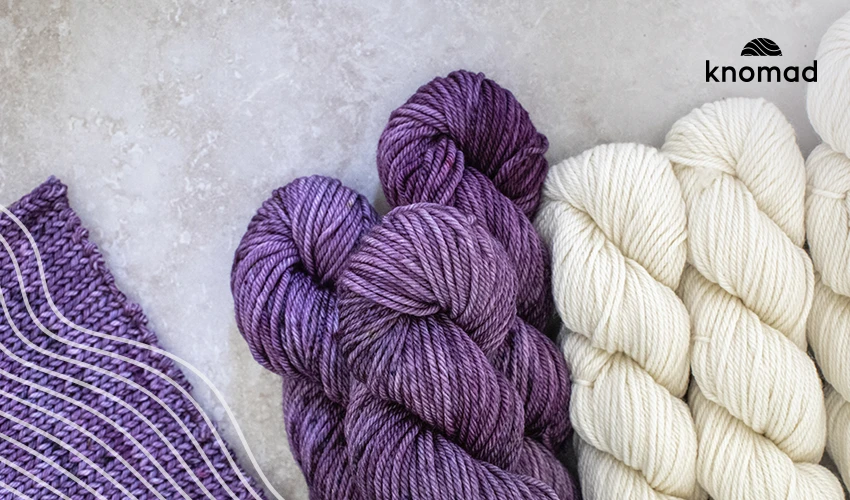
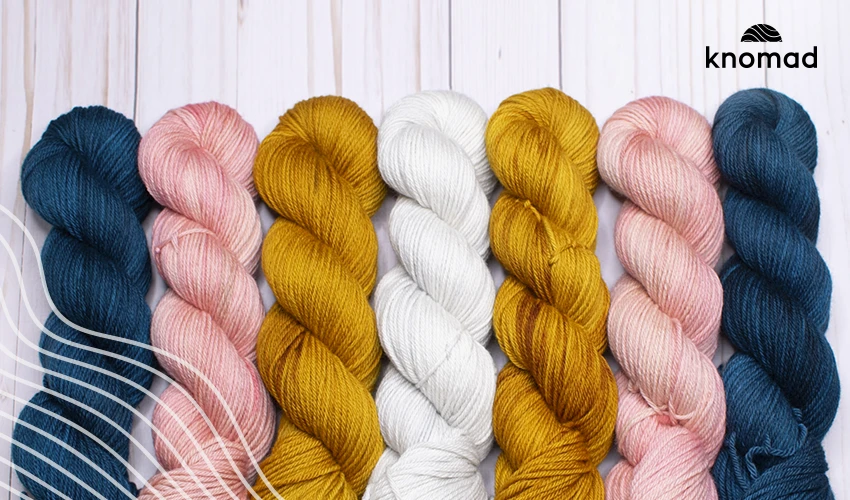
Leave a Reply